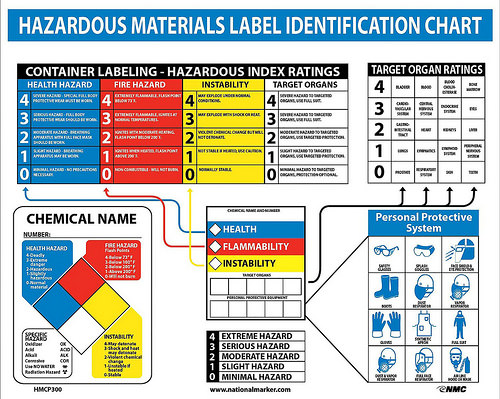On June 22, President Obama signed the “Frank R. Lautenberg Chemical Safety for the 21st Century Act,” which revises the 1976 Toxic Substances Control Act (TSCA) extensively. TSCA was enacted 40 years ago to empower the Environmental Protection Agency (EPA) to acquire and evaluate data regarding the effects of chemical substances and mixtures on human health and the environment, and to prevent unduly hazardous chemicals from entering commercial use. Although TSCA was a huge step forward at the time, its limitations became ever clearer in subsequent years, and compounded to leave important gaps in protective regulation of chemicals. (I summarized basic provisions here). The late Senator Lautenberg spent many years trying to thread the political needle between chemical companies and health and environmental advocates. He died without achieving this goal, but is honored by the new legislation – which I refer to from now on as “the 2016 Amendments.” (I summarized an earlier version of this new legislation here)
Read MoreAudit, Compliance and Risk Blog
Late in the 1970s, measurements in the stratosphere revealed that levels of ozone were falling – the headline summary of this trend was the annual appearance of a thinned-out “ozone hole” over the Arctic and Antarctic regions. Health and environmental and human health scientists worried because stratospheric ozone is an important absorber of potentially damaging ultraviolet radiation (bad for penguins under the ozone hole, and eventually bad for humans on the rest of the planet). Further studies concluded that the culprits were halocarbon chemicals used as refrigerants, solvents, propellants, and foam-blowing agents. Dubbed “ozone depleting substances (ODSs)”, these chemicals (including chlorofluorocarbons (CFCs), halogenated chlorofluorocarbons (HCFCs), freons and halons) are relatively non-reactive when released on the surface, so they persist in the atmosphere long enough to drift up to the stratosphere where incoming solar radiation eventually powers their reaction with ozone.
Read MoreTags: Environmental risks, Environmental, EHS, Hazcom, climate change
On May 17, the Environmental Protection Agency (EPA) issued a proposed order registering the pesticide sulfoxaflor, using authority under the Federal Insecticide, Fungicide and Rodenticide Act (FIFRA). This proposal is the latest action in a long-running and controversial review of that potential pesticide, and continues to consider how toxic this active ingredient is to bees, and therefore how and if it can be used. Coming after a recent court decision vacating EPA’s previous attempt to register sulfoxaflor, the answer is not clear (I provided a basic discussion of FIFRA registration here).
Read MoreTags: Environmental risks, Environmental, EHS, EPA, Hazcom
Supreme Court Decides When Corps of Engineers’ Jurisdictional Determinations are “Final” and Appealable
Posted by Jon Elliott on Tue, Jul 05, 2016
Section 404 of the Clean Water Act (CWA) authorizes the U.S. Army Corps of Engineers (Corps) to regulate the “discharge” of “dredged material” or “fill material” into “navigable waters.” Section 404 provision applies if someone wants to dredge a waterway, put fill (or a constructed feature such as a pier or berm) into a waterway, or fill a wetland that occupies a waterway, if that waterway is regulated by CWA as a “water of the United States.” That definition is subject to extreme controversy at the moment – several U.S. Supreme Court decisions struck down a century of agency interpretations, which the Corps and the Environmental Protection Agency (EPA) sought to readjust by changing rules that have now been stayed pending litigation that’s certain to reach the Supreme Court again (I blogged about the rules here).
Read MoreTags: Environmental risks, Environmental, EPA, Hazcom, effluent
Most of the laws and regulations discussed in these blogs exist to ensure proper management of hazardous chemicals and products, in ways designed to minimize environmental and human exposures. Pesticide management provides important variations on these themes, since pesticides are used for the very purpose of killing targeted organisms in the environment … and are regulated to target those uses to protect humans and other non-target species. Within the United States, the Federal Insecticide, Fungicide and Rodenticide Act (FIFRA) provides the national framework for regulation of pesticides, including registration of active ingredients and mixtures, licensing of applicators, and requirements for the application and use of these hazardous materials. FIFRA provides the U.S. Environmental Protection Agency (EPA) with overall responsibility, although different elements of pesticide regulation are subject to different balances of federal (EPA) and state control.
Read MoreTags: Health & Safety, OSHA, EHS, EPA, Hazcom
The Occupational Safety and Health Administration (OSHA) requires employers to protect their employees against possible exposure to “bloodborne pathogens (BBPs).” OSHA’s Bloodborne Pathogen Standard prescribes protections for workers occupationally exposed to blood or other potentially infectious materials (OPIM). Healthcare workers are the most obvious beneficiaries, but emergency responders and others may also be regularly at risk to these exposures.
Read MoreTags: Employer Best Practices, Health & Safety, OSHA, Employee Rights, Environmental risks, EHS, Hazcom, pharmaceuticals
The Clean Water Act’s (CWA’s) national water quality purview includes National Pollutant Discharge Elimination system (NPDES) provisions for “stormwater” that may contain pollutants such as oil, industrial contaminants, and sediment. This means run-off of rain or snow melt containing pollutants from manufacturing, processing, or raw material storage areas at an industrial site, that passes through a “conveyance” (such as a storm drain) into waters of the United States. The Environmental Protection Agency (EPA) administers or delegates permit programs covering discharges from the following:
Read MoreTags: Environmental risks, Environmental, EHS, EPA, Hazcom, Stormwater
The U.S. Department of Transportation (DOT) defines national requirements for the transportation of hazardous materials, under what’s commonly called the Hazardous Materials Transportation Act (HMTA). DOT agencies promulgate most regulatory requirements with nationwide applicability, and delegate most administrative and oversight responsibilities to state transportation and highway patrol agencies. Delegated functions include state-level registration of motor carriers that transport hazardous materials by roadways, and licensing for their drivers.
Read MoreTags: Health & Safety, Environmental risks, Environmental, Hazcom, Transportation
The US Occupational Safety and Health Administration (OSHA) regulates thousands of chemicals, through regulatory standards directing employers to reduce worker exposures. At the broadest level, employers must evaluate basic information about every potentially hazardous chemical, and provide information to employees in compliance with OSHA's Hazard Communication Standard (I’ve blogged about changing HCS requirements here, and here). OSHA’s Air Contaminants Standard provides ambient workplace air limits for hundreds of listed contaminants. OSHA also provides more tailored requirements for classes of chemicals (such as flammables), and for types of activities that pose chemical hazards (such as welding). For a small number of especially hazardous chemicals, OSHA provides a detailed standard applicable to a single chemical—examples include asbestos, benzene, and lead. On March 25, 2016, OSHA established another single-chemical standard, for respirable crystalline silica (29 CFR section 1910.1053). Most affected employers must comply by June 23, 2018; a few provisions are phased in later, and construction employers must meet most requirements by June 23, 2017.
Read MoreTags: Health & Safety, OSHA, EHS, Hazcom
Emissions in the Shipping Industry: Who Is Steering the Ship?
Posted by Jane Dunne on Tue, Apr 05, 2016
You might ask how it is possible that there is no direct mention of the shipping industry in the Paris Agreement at COP21. Many people wonder just how much air pollution is created by the shipping industry and who is working to improve this mysterious source of greenhouse gas emissions?
Read MoreTags: EHS, Greenhouse Gas, ghg, Hazcom










